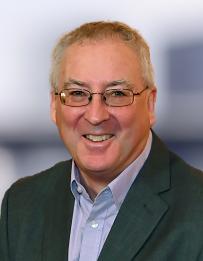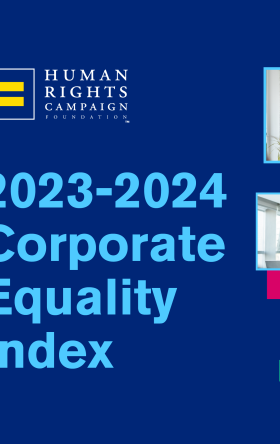A View on the Future of Bridges: A Q&A with Nick Fuchs
Global bridge director talks connecting communities through infrastructure

Often seen as modern engineering marvels, bridges link communities and commerce, with their success ultimately hinging on how safely, quickly and economically they can be designed and constructed.
As the No. 2 bridge firm as ranked by Engineering News-Record, Jacobs designs bridges spanning roads, railways and rivers, crossing valleys, estuaries and sea straits – connecting communities and creating opportunities for social change and economic development. We’ve played lead roles planning, procuring, designing and delivering some of the world's most prestigious and technically demanding structures, not to mention beautiful.
The connections our bridge team helps deliver in society wouldn’t be possible without our talented teammates like Nick Fuchs, our global director of bridges. In this Q&A, we connect with Nick to get his thoughts on the trends and technologies advancing bridge engineering and connections for tomorrow.
Tell us a bit about what a day in the life is like as Jacobs’ Global Cross-Cutting Market Director for Bridges, and what we offer to our clients in the bridge space.
A key part of my role is bringing together the enormous bridge experience and talent from across the company and helping bring our bridge solutions (both experience and people) in front of our clients to showcase how we can deliver their vision.
When I look at our bridge engineering team, I see a full-service consultancy and global offering, both in terms of regional expertise and in the scope of the projects we deliver – we work on the biggest bridges and the smallest bridges, and on every type of bridge structure, that all provide vital connections locally.
You mention full-service consultancy. Can you explain a bit about what that means for our clients?
It very much depends on the client and the stage of their project.
There are times when we start working with clients at a high-level, conceptual phase. These discussions take place at the very front end of projects, considering where a highway might go, for example, or where it might cross a river or a major seaway. Other clients have existing and often, aging assets so conversations are focused on how to maintain infrastructure or make upgrades with little disruption, especially for bridges that impact major roadways or railways.
We help our clients on their projects from start to finish. This means that we’re engaged from the very earliest stages; when clients are just beginning to think “maybe I need a bridge or maybe it's a tunnel, or maybe it's a combined crossing.” We’re involved from those early discussions of what the project is going to be, right through to design, construction oversight and commissioning, and even ongoing operational and maintenance support. We support the whole lifecycle of projects – no matter the size.
What are the biggest opportunities ahead for bridge projects?
Of course, we’re seeing the growth of metro schemes and high-speed rail around the globe. But more specifically when it comes to other opportunities, there is a lot of bridge activity in the Middle East that’s focused on connecting countries with crossings over water. These are signature bridge opportunities connected to the ongoing mega and giga projects in the Middle East. Developers and governments are seeking statement structures that give individuality and identity to these developments, while also providing the necessary connectivity and functionality.
In North America, particularly in the U.S., with the Infrastructure Investment and Jobs Act (IIJA) and the stimulus money, we’re seeing critical infrastructure upgrades move forward that have been fairly limited or slow moving for a long period of time. Projects like these, such as the Brent Spence Bridge Corridor, are helping reduce growing traffic congestion, improving safety and keeping people and the flow of goods moving.
In the U.K., there's been quite a significant shift from new build to asset management, retention and improvement. So, while the levels of investment haven’t changed for bridge projects, the skillsets have – so there’s opportunity to reshape and grow in that capacity.
Bridge trends change right along with the world around us. Where do you see the industry heading?
With the rise of digital, we’re developing new tools and ways of working to automate more of the mundane tasks – creating more space for engineers to do what they do best: innovate, think bigger, and solve our clients’ challenges. At Jacobs, we’ve placed a strategic focus on data solutions, adding digital capabilities, products and tools that help our clients really think through and solve their core issues. This shift is a big one and it’s constantly coming faster.
The other trend is decarbonization, as our clients and the world around us grapple with climate change and the transition to net zero. Bridge engineers have historically thought about quantities of steel and concrete. Now, they need to think about quantities of carbon, and beyond that, impacts on biodiversity and a holistic view on quality of design as we work to help our clients develop projects that meet the evolving needs of communities around the world. How we address these issues creates a great opportunity to rethink approaches going forward including novel materials and manufacturing/erection methods.
Bridges have tremendous impact on the communities they serve. Is there a project you’re particularly proud of?
One of my very first big projects was detailed design of a link between England and Wales, originally called Second Severn Crossing, now known as the Prince of Wales Bridge. The project augments an existing bridge that wasn’t wide enough for growing traffic volumes and was susceptible to being closed in times of poor weather. With its location in the second highest tidal range in the world this project taught me that the design and construction of big bridges is closely related and to be successful one needs to understand both.
I’ve used that bridge many times in the following years and enjoy seeing the benefits it gives to the communities of South Wales and Bristol, England, both large employment hubs and areas of population growth. Connecting these two locations not only improves their day-to-day mobility but also provides enhanced economic vitality. You can really see the difference.
More recently, our team is working in South Africa on the design and construction of two large bridges as part of a roadway scheme in one of the poorest areas of the country. These connections will open the area to commerce, provide access to job opportunities and link people and communities.
It’s truly rewarding to be part of building these connections to a brighter future.
About the interviewee

Jacobs Global Cross-Market Director for Bridges Nick Fuchs has more than 30 years of experience spanning all aspects of bridge engineering from inception, planning, concept design through to design, construction and maintenance. He’s led concept design works in environmentally challenging locations like Bermuda to the realization of two large bridges (one cable stay and one long span concrete balanced cantilever) in South Africa. Nick has worked with world-class architects, on technically challenging high-speed rail bridges, and on rewarding footbridges around the world. Outside of work, he enjoys sailing, hill walking, steam railways and photography.














































